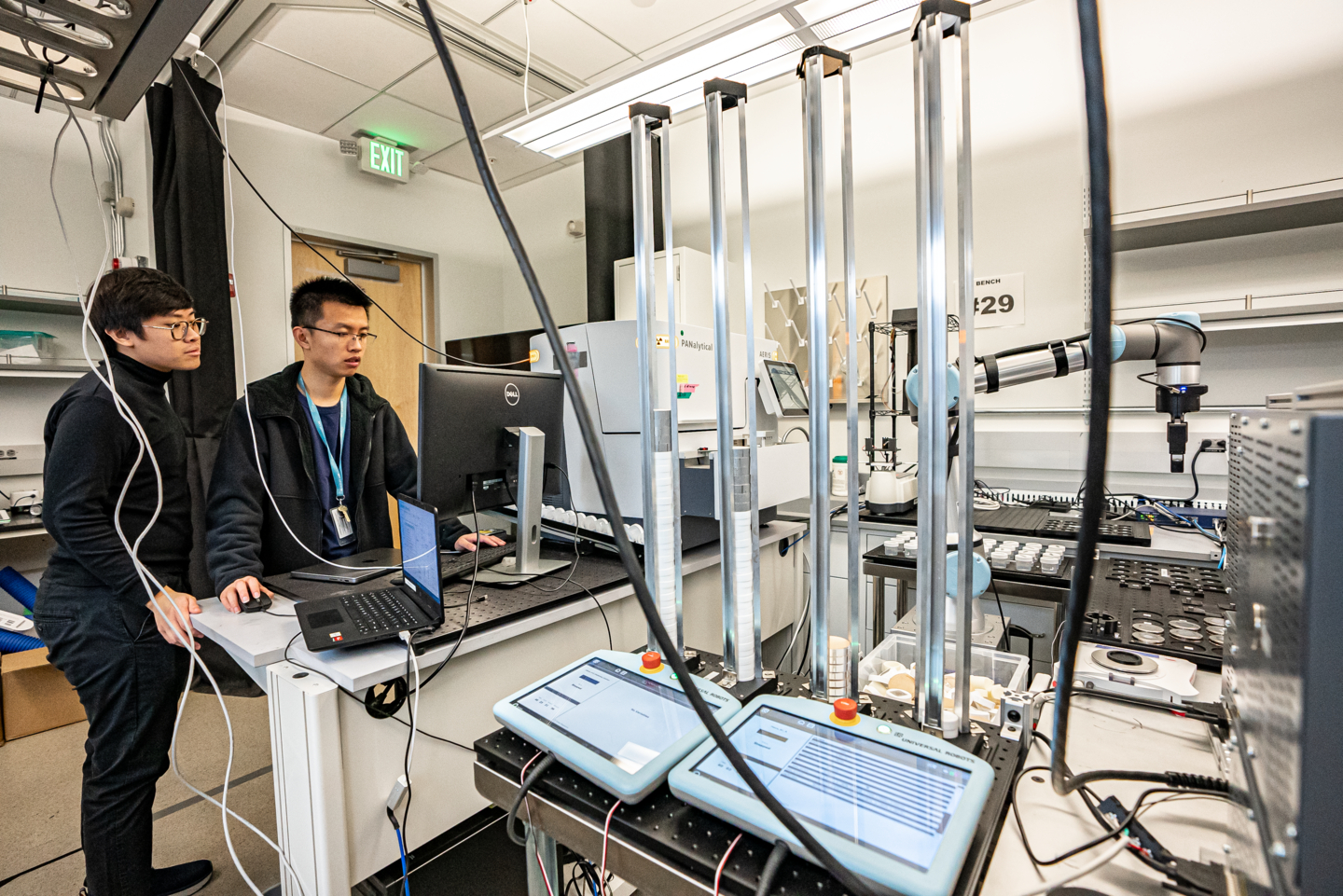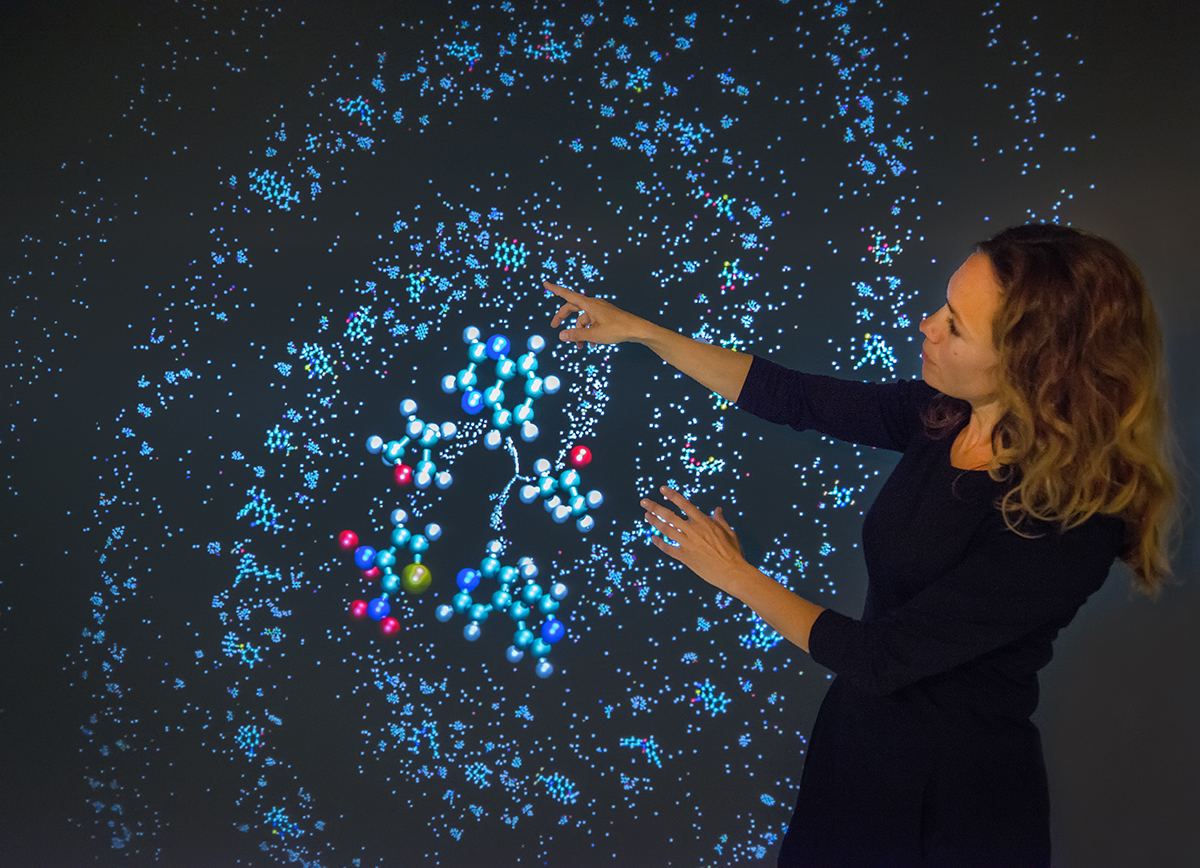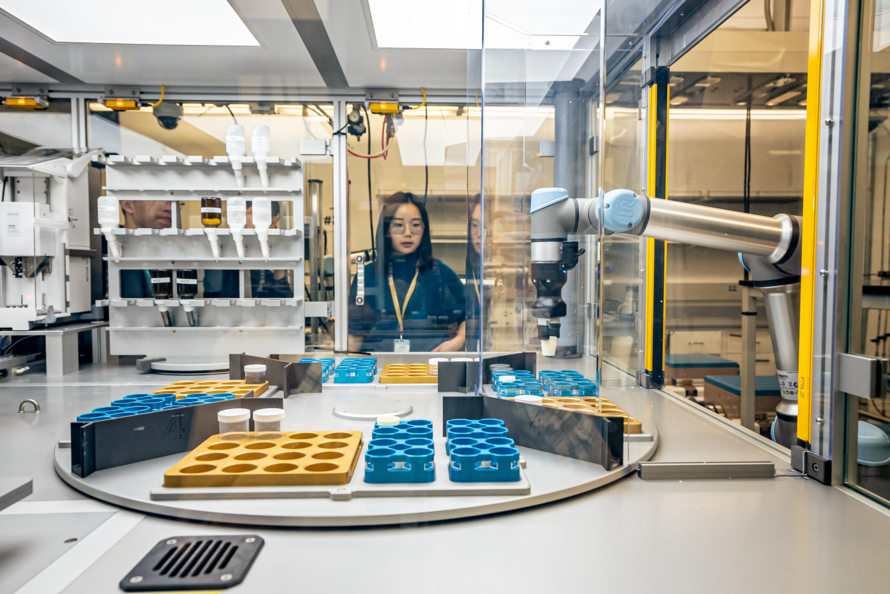To accelerate development of useful new materials, researchers are building a new kind of automated lab that uses robots guided by artificial intelligence.
“Our vision is using AI to discover the materials of the future,” said Yan Zeng, a staff scientist leading the A-Lab at the Department of Energy’s Lawrence Berkeley National Laboratory (Berkeley Lab). The “A” in A-Lab is deliberately ambiguous, standing for artificial intelligence (AI), automated, accelerated, and abstracted, among others.
Scientists have computationally predicted hundreds of thousands of novel materials that could be promising for new technologies – but testing to see whether any of those materials can be made in reality is a slow process. Enter A-Lab, which can process 50 to 100 times as many samples as a human every day and use AI to quickly pursue promising finds.
A-Lab could help identify and fast-track materials for several research areas, such as solar cells, fuel cells, thermoelectrics (materials that generate energy from temperature differences), and other clean energy technologies. To start, researchers will focus on finding new materials for batteries and energy storage, addressing critical needs for an affordable, equitable, and sustainable energy supply.
Once a target material is selected – by human researchers or their AI agents – a series of robots carry out the steps at A-Lab to synthesize it:
“Some people might compare our setup with manufacturing, where automation has been used for a long time,” Zeng said. “What I think is exciting here is we’ve adapted to a research environment, where we never know the outcome until the material is produced. The whole setup is adaptive, so it can handle the changing research environment as opposed to always doing the same thing.”
The system at A-Lab is designed as a “closed-loop,” where decision making is handled without human interference. The robots operate around the clock, freeing researchers up to spend more time designing experiments.
“We see this as a new way of doing research,” said Gerd Ceder, the principal investigator for A-Lab. In many ways, Ceder noted, lab research has been the same for the last 70 years: the equipment may have gotten better, but ultimately a person is needed to take measurements, analyze results, and decide what to do next.
A-Lab by the numbers:
- Robotic arms: 3
- Furnaces: 8
- Powder precursors: ~200
- Lab size: 600 square feet
- Operates: 24/7
- Samples tested per day: 100-200
“We need materials solutions for things like the climate crisis that we can build and deploy now, because we can’t wait – so we’re trying to break this cycle that is so slow by having machines that correct themselves,” Ceder said. “The important thing is not working in parallel, but instead to iterate rapidly, the way scientists operate. We want the system to try something, analyze the data, and then decide what to do next to get closer to the goal.”
A-Lab is thought to be the first fully automated lab that uses inorganic powders as the starting ingredients. This “solid-state synthesis” is a more difficult task than automating processes that use liquids, which can be easily dispensed with pumps and valves. But the extra effort comes with a big payoff.
“Our solid-state synthesis is more realistic, can incorporate a wider variety of materials, and can make larger quantities of materials,” Ceder said. “You can produce quantities that are ready for application, not just science exploration. It’s ready to scale.”
A-Lab researchers had to adapt both hardware and software for the robots, furnaces, and analysis tools, getting them to perform certain actions and talk to the central hub controlled by the AI. In some cases, such as the shaker to remove the newly baked material, they had to build a new solution entirely from scratch.
As the automated system creates and analyzes samples, the data will flow back to both A-Lab researchers as well as data repositories such as the Materials Project. Scientists are also building out integrations with other projects, such as MaterialSynthesis.org, and leveraging x-rays from Berkeley Lab’s powerful synchrotron, the Advanced Light Source.
“You can imagine the power of a lab that autonomously starts with predictions, requests data and computations to get the information it needs, and then proceeds,” Zeng said. “As A-Lab tests materials, we’re going to learn the gap between our computations and reality. That will not only give us a handful of useful new materials, but also train our models to make better predictions that can guide future science.”
Work on A-Lab began in 2020, and the project later received funding from the DOE’s Office of Science and Laboratory Directed Research & Development (LDRD) Program, which encourages innovative ideas and experiments. Zeng and a team of 10 students and postdocs began building out the lab in earnest at the start of 2022 and installed the final piece a little over one year later.
A-Lab began operating in February and has already synthesized several novel materials in collaboration with the Materials Project. Researchers are currently fine-tuning the system while continuing to add features. These include robots that can restock supplies and change precursors, synthesis instruments that let them mix and heat liquids, and additional equipment to analyze newly created materials.

###
Founded in 1931 on the belief that the biggest scientific challenges are best addressed by teams, Lawrence Berkeley National Laboratory and its scientists have been recognized with 16 Nobel Prizes. Today, Berkeley Lab researchers develop sustainable energy and environmental solutions, create useful new materials, advance the frontiers of computing, and probe the mysteries of life, matter, and the universe. Scientists from around the world rely on the Lab’s facilities for their own discovery science. Berkeley Lab is a multiprogram national laboratory, managed by the University of California for the U.S. Department of Energy’s Office of Science.
DOE’s Office of Science is the single largest supporter of basic research in the physical sciences in the United States, and is working to address some of the most pressing challenges of our time. For more information, please visit energy.gov/science.



